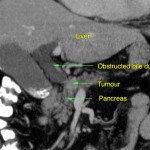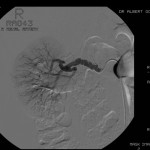Blocked Bile Ducts -PTC
Ideal for patients who have conditions that cause blocked bile ducts:
- inflammation of the pancreas or bile ducts
- tumours – pancreatic cancer, gallbladder, bile duct, liver or enlarged lymph nodes due to a variety of different tumours
- gallstones, either in the gallbladder or in the bile ducts
- injury to the bile ducts during surgery
- infection
Benefits:
- No surgical incision is required – only a small nick in the skin that does not need to be stitched closed.
- Additional risks of open surgery are avoided.
- Shorter hospital stay than that of open surgery.
- Recovery time is significantly shorter than open surgery.

Treatment of Liver Tumours
Liver tumours are a significant cause of mortality and morbidity. There are two types of liver tumours i.e. primary and secondary.
– A primary liver tumour arises from the liver tissue itself.
– A secondary liver tumour arises from a distant location and then spreads to the liver.
Some tumours may be resectable with open surgery.
Ideal for patients who:
- have inoperable primary liver tumours
- have inoperable secondary liver tumours
- have tumour progression despite treatment
- need a break between chemotherapy treatment
Benefits:
- Treatment can be injected into the hepatic artery, directly targeting the liver tumour.
- Minimises the effect on healthy liver tissue.
- Decreases toxicity to the rest of the body.
How are liver tumours treated?:
- Unresectable tumours can be treated with liver directed therapy.
- Other treatment options include chemo-embolisation, radio-embolisation and portal vein embolisation.


